When your prescription switches from a brand-name drug to a generic, do you even notice? Most people don’t. But if you’re handed a pill that looks, tastes, and works exactly like the one you’ve been taking for years-except it costs 40% less-would you stick with it? That’s the real question behind authorized generics.
What Exactly Is an Authorized Generic?
An authorized generic isn’t just another generic. It’s the exact same drug as the brand-name version, made by the same company, in the same factory, using the same ingredients. The only difference? No brand name on the bottle. You get the same tablet, capsule, or liquid-same active ingredient, same fillers, same color, same size-but it’s sold under a generic label at a lower price.
Here’s how it works: When a brand-name drug’s patent expires, the original manufacturer can launch its own generic version. This isn’t the same as a traditional generic, which is made by a different company and must prove it’s bioequivalent through a lengthy FDA process. Authorized generics skip that step because they’re already approved under the brand’s original application. They hit the market faster, often within weeks of patent expiry.
Think of it like a car company selling the exact same model under two different names-one with the flashy logo, one without. Same engine. Same seats. Same warranty. Just a different badge.
Why Do Patients Stick With Authorized Generics?
Patients don’t usually pick their meds. Insurance plans and pharmacies decide what gets dispensed. But when given a choice-either through a copay difference or a pharmacist’s suggestion-many patients lean toward authorized generics over traditional ones.
A 2018 study tracking over 210,000 patients found that only 22.3% of people switched back to the brand-name drug after starting an authorized generic. Compare that to traditional generics: nearly 29% went back to the brand. That’s a big difference. Why? Because patients don’t feel like they’re getting something inferior. The pill looks identical. The effect is the same. There’s no surprise side effect from a new filler or coating they didn’t expect.
One patient on Reddit wrote: "I’ve been on the same antidepressant for five years. My pharmacy switched me to an authorized generic. I didn’t notice a thing. My doctor didn’t even mention it. I saved $80 a month. Why would I go back?" That sentiment is common. In a Consumer Reports survey, 78% of people couldn’t tell the difference between the brand and the authorized generic when given unlabeled pills. That’s higher than the 52% who couldn’t tell traditional generics apart from the brand.
Price Still Matters-But Not Always Right Away
Authorized generics are cheaper than brand-name drugs, sure. But they’re not the cheapest option. Traditional generics usually drop to 15-25% lower prices after the first 180 days of market competition. That’s when the real savings kick in.
So here’s the pattern: In the first six months after a brand drug goes generic, authorized generics capture 35-40% of the market. They’re the first alternative people see. Pharmacies stock them because they’re reliable. Insurance plans favor them because they’re already approved and predictable.
But after that window? Traditional generics take over. By the one-year mark, they hold 65-75% of the market. Why? Price. If your copay for the authorized generic is $15 and the traditional generic is $5, most people will switch-even if they don’t notice a difference.
It’s not about trust. It’s about dollars. And for people on fixed incomes, $10 a month adds up to $120 a year. That’s a lunch, a bus pass, or a week’s worth of groceries.
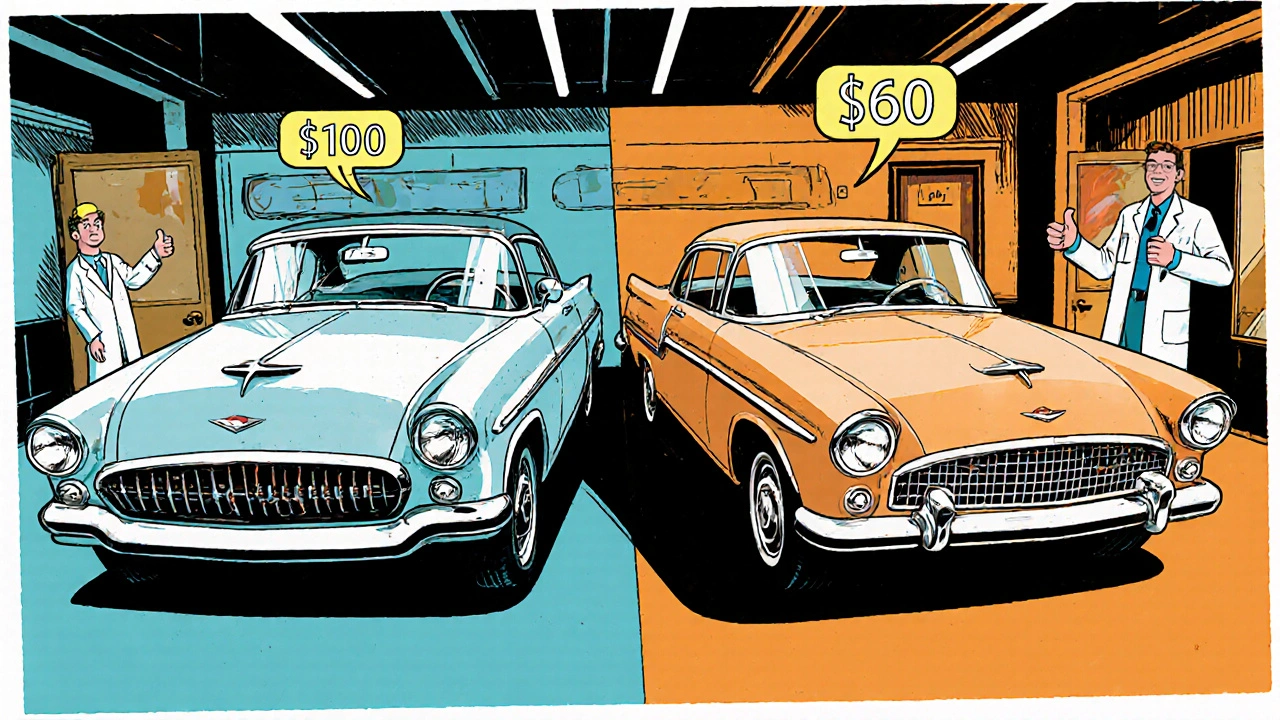
Why Do Drug Companies Push Authorized Generics?
It’s not charity. It’s strategy.
Brand manufacturers know their profits will drop once generics enter the market. So they launch their own version to keep some of that revenue. It’s a way to soften the blow. And it works. In markets where authorized generics are present, retail prices drop 4-8% and wholesale prices drop 7-14% compared to markets without them.
But here’s the darker side: Sometimes, brand companies use the threat of launching an authorized generic to pressure other generic makers into delaying their entry. The Federal Trade Commission found cases where generic companies agreed not to launch their own version-in exchange for a cut of the authorized generic’s profits. That’s called a "pay-for-delay" deal. It keeps prices higher for longer.
It’s a legal loophole. The Hatch-Waxman Act was meant to speed up generic competition. But authorized generics let the original brand stay in the game. The FTC calls it "disturbing." Patients? They just want the cheapest, most reliable option.
What Do Pharmacists See?
Pharmacists are on the front lines. They’re the ones explaining why two pills that look identical have different prices.
"Patients get confused," says a pharmacist in Ohio. "They’ll say, ‘But this is the same pill!’ And I say, ‘Yes, but this one’s made by the brand company. That one’s made by someone else. Both are safe. One’s cheaper.’"
The problem? Authorized generics don’t always show up clearly in pharmacy systems. The FDA’s Orange Book lists them as "products with no applicant," which means pharmacists have to dig to find them. Not every system flags them. Not every pharmacist knows to ask.
And that’s the real barrier: awareness. Most patients don’t know the term "authorized generic." They just see a lower price and assume it’s "just another generic." They don’t realize they might be getting the exact same drug they were on before-just without the brand name.
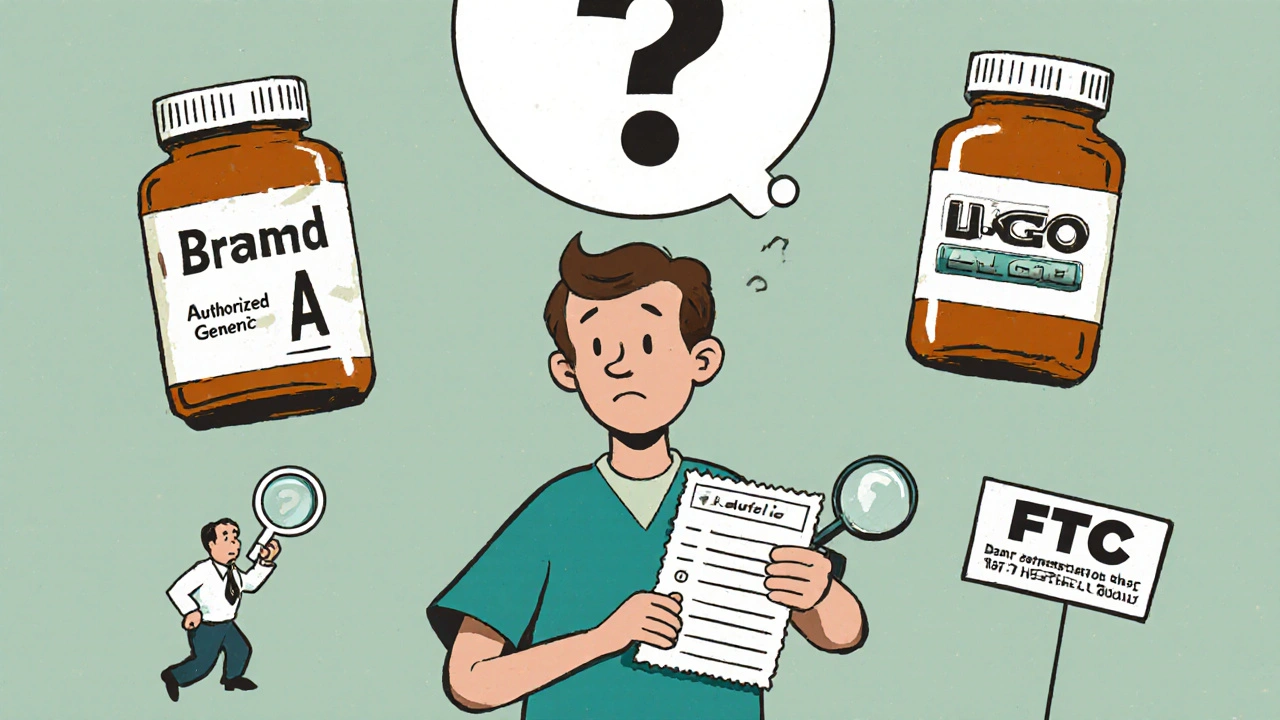
Are Authorized Generics Right for Everyone?
For most people, yes. If you’re on a stable medication-like blood pressure pills, thyroid meds, or antidepressants-the switch to an authorized generic is seamless. No side effects. No loss of effectiveness. Just savings.
But there are exceptions. Some patients are sensitive to inactive ingredients. Even tiny changes in fillers or dyes can cause issues for people with allergies or intolerances. That’s rare, but it happens. If you’ve had a bad reaction to a generic before, talk to your doctor. Ask if the authorized generic has the same inactive ingredients as your brand.
Also, don’t assume all generics are equal. A traditional generic made by a reputable company can be just as good as an authorized one. The key is consistency. If you’ve been doing well on one version, stick with it unless there’s a clear cost benefit.
What’s Changing Now?
Authorized generics are growing. In 2015, they made up 8% of all generic prescriptions. By 2023, that jumped to 12%. Analysts predict they’ll hit 15-18% by 2028.
Why? Because big pharma keeps using them. Pfizer, Merck, AbbVie-all have launched authorized versions of their top-selling drugs. Cardiovascular and CNS medications (like statins and antipsychotics) are the most common.
But there’s pushback. The Congressional Budget Office warns that if brand companies use authorized generics to delay full competition, Medicare Part D could pay $1.2 billion more by 2027. Meanwhile, generic drug advocates say it’s a loophole that undermines the whole point of generics: to drive down prices through competition.
So where does that leave patients?
What Should You Do?
Don’t panic. Don’t assume all generics are the same. But don’t assume brand is better either.
- If your insurance switches you to a generic, ask: "Is this an authorized generic?"
- If it is, and you feel fine, keep taking it. You’re getting the same drug at a lower price.
- If it’s a traditional generic and you’re worried, ask your pharmacist: "Can I get the authorized version?" Sometimes they can switch it with a note from your doctor.
- If price is the main factor, go with the cheapest option after the first six months.
- If you’ve had side effects with any generic before, check the inactive ingredients. Ask for the brand or authorized version if needed.
Bottom line: Authorized generics aren’t magic. They’re not always the cheapest. But they’re often the most reliable alternative to the brand. For many patients, they’re the sweet spot between trust and savings.
And that’s why, even in a world full of confusing choices, so many people quietly choose them.
Are authorized generics as safe as brand-name drugs?
Yes. Authorized generics are made by the same manufacturer, in the same facility, with the exact same ingredients as the brand-name drug. The FDA requires them to meet the same quality and safety standards. There’s no difference in effectiveness or safety.
Why are authorized generics sometimes more expensive than regular generics?
Because they’re made by the brand company, they don’t have the same cost-cutting pressures as traditional generics. Traditional generics are made by companies that compete on price, so they drive costs down. Authorized generics offer reliability and familiarity, which can justify a slightly higher price-especially in the first few months after a drug goes generic.
Can I request an authorized generic from my pharmacy?
Yes, but it depends on your insurance. Most plans automatically substitute generics. You can ask your pharmacist if an authorized generic is available and if your plan will cover it. Sometimes a note from your doctor saying "dispense as written" can help, but it’s not always necessary.
How do I know if my generic is an authorized generic?
Check the label. Authorized generics often list the brand name’s manufacturer as the distributor. You can also ask your pharmacist or look up the drug in the FDA’s Orange Book under "Products with No Applicant." It’s not always obvious, so don’t hesitate to ask.
Do authorized generics affect my insurance copay?
Usually, yes. Most insurance plans treat authorized generics the same as traditional generics-they fall under the same tier. But sometimes, the copay is slightly higher because the manufacturer is the brand company. Always check your plan’s formulary or ask your pharmacy to compare prices.

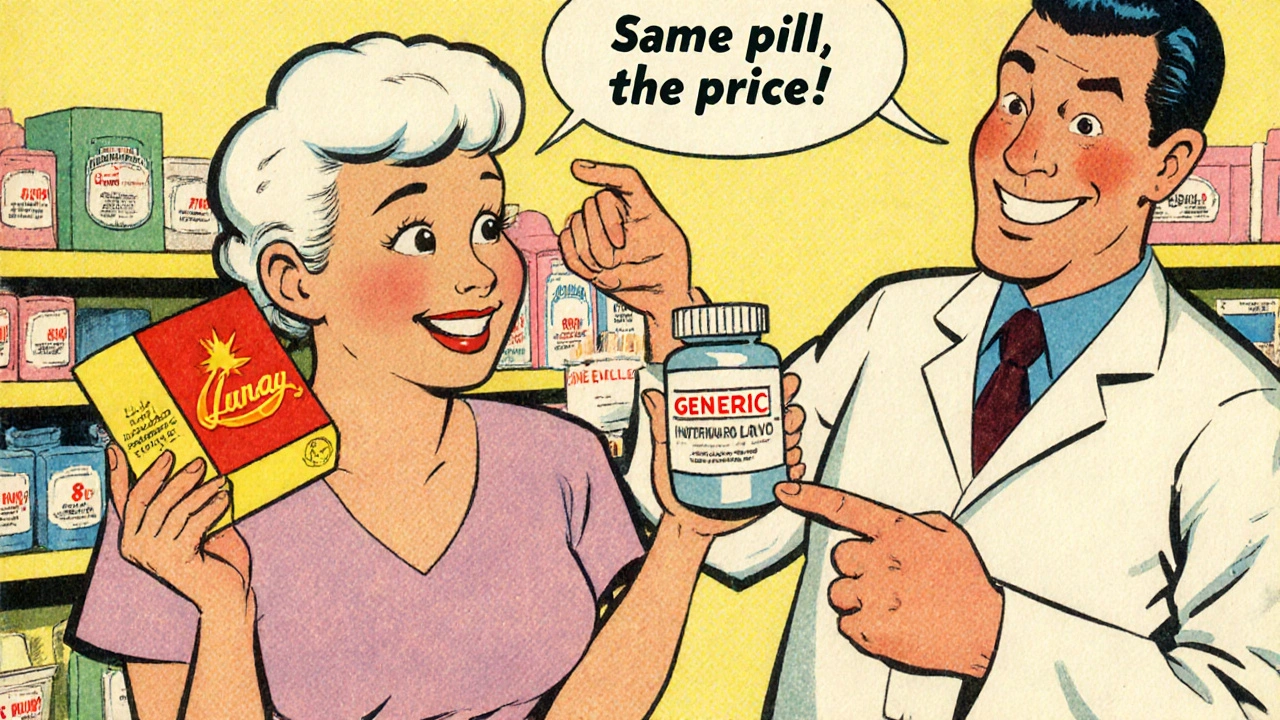
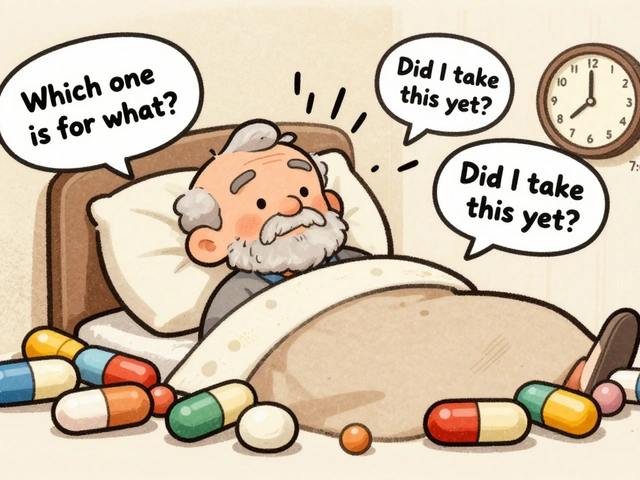


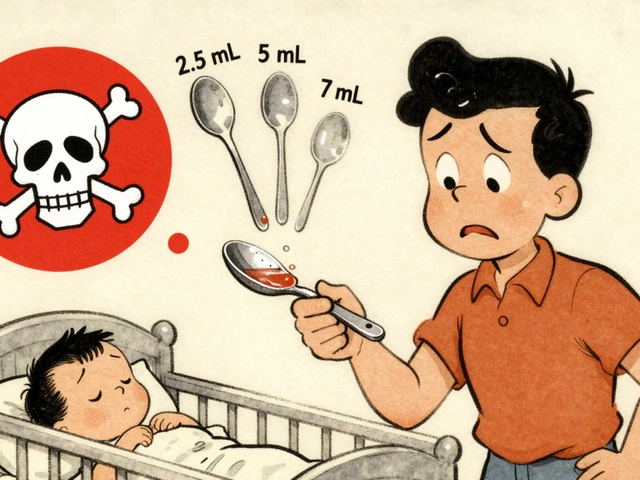


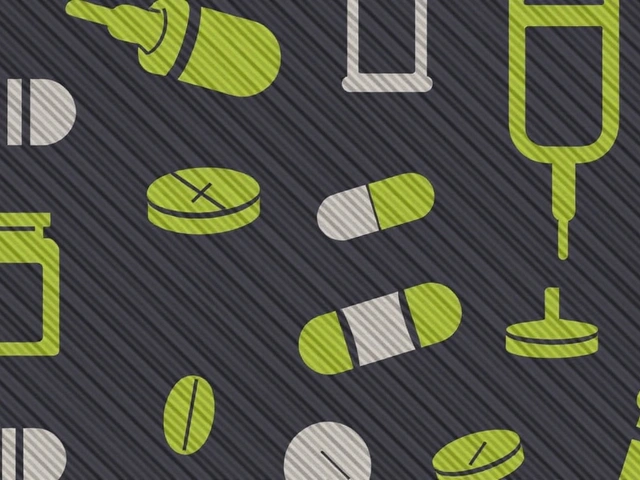

Just switched my anxiety med to an authorized generic last month 😍 Same pill, same vibe, $75 less a month. My wallet and my mental health are both thanking me. Why pay extra for a logo? 🤷♂️💊
The structural integrity of pharmaceutical supply chains is often misunderstood by the lay public. Authorized generics represent a market mechanism that preserves regulatory continuity while introducing price elasticity. One must distinguish between perceived equivalence and actual bioequivalence.
LMAO so now we're paying for the same pill but with a different label? Big pharma is just laughing all the way to the bank. They make the brand, then make the 'cheap' version of it and still charge more than the real generics. Smh. 🤡
Let me guess-this is just another Trojan horse for corporate consolidation under the guise of ‘patient choice.’ The FDA? Complicit. The FTC? Toothless. And now we’re being told to trust the same companies that rigged the patent system for decades. Wake up. This isn’t savings-it’s manipulation dressed in white coats.
Authorized generics? More like authorized profit retention. The real generics are cheaper, but people are too lazy to research. Also, why do Americans think ‘same pill’ means ‘same safety’? Fillers vary even in authorized versions. 🤔
From a pharmacoeconomic standpoint, the authorized generic model introduces a unique dynamic: it reduces the price elasticity gap between branded and generic markets during the critical post-patent cliff window. The psychological anchor of familiarity-cognitive continuity in medication adherence-is empirically significant, particularly in chronic CNS conditions. This isn't just about cost; it's about therapeutic continuity as a behavioral intervention.
My grandma’s been on her blood pressure med for 12 years. Switched to authorized generic last year-no issues, saved $60/month. She didn’t even know the difference until I told her. Sometimes the best thing is just… not changing anything except the price tag. 😊
It’s ironic, isn’t it? We live in a world where we’ll pay $20 for a latte with a ‘craft’ label, but balk at paying $15 for a pill that’s literally identical. The brand is a placebo. The pill? Just chemistry. We’ve been conditioned to worship logos like they’re sacred relics. 🧠💸
Wait-so the company that made the brand ALSO makes the ‘cheap’ version? That’s not a loophole-that’s a SCAM. They’re playing both sides: they get the profit from the brand, then they get the profit from the ‘generic’… and now we’re supposed to be grateful? NOPE. NOPE. NOPE. 💥
Just checked my last refill-turns out I’ve been on an authorized generic for 8 months and never knew. My pharmacist never mentioned it. I feel like I’ve been living a lie. 😅 But hey, I’m saving money and still feel fine. Maybe I’ll ask next time if I can stick with it.